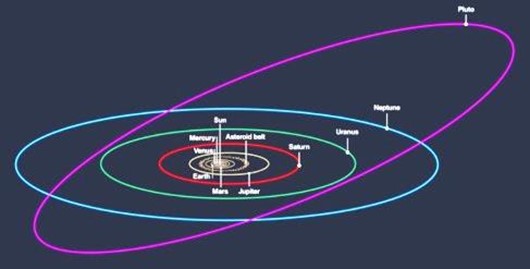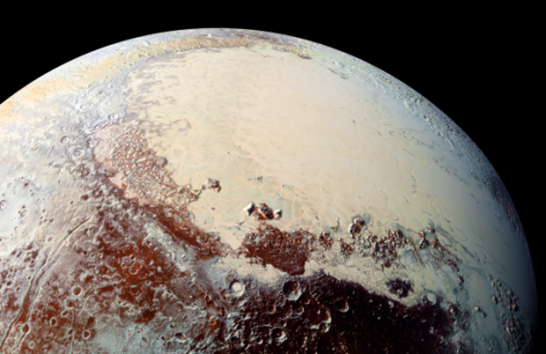by Patricia Jeffery © 2024, Calgary Centre of the Royal Astronomical Society of Canada
Upon its discovery in 1930, Pluto was immediately proclaimed the ninth planet in our solar system. Astronomers however were always puzzled by its minuscule size (much smaller than Mercury) and a bizarre orbit that overlapped with Neptune’s.
To qualify as a planet, an object must: 1) orbit the Sun, 2) have enough mass and gravity to be circular in shape, 3) possess enough gravitational force to clear its orbit of other objects. As Pluto’s orbit is littered with asteroids and other space debris, it failed to meet the last criterion.
After four similar sized objects were detected in the 1990s, Pluto was demoted to dwarf planet status in 2006.
Facts About Pluto:
- Named for the Roman god of the underworld, not a cartoon dog.
- If our Sun is the goal post of a CFL football field, Earth is on the two-yard line; Pluto on the opposing team’s 31-yard line.
- Located far beyond Neptune in an area known as the Kuiper belt.
- 170 Plutos could fit inside Earth.
- Lying almost on its side, it rotates backwards on its axis every six days; thus, the Sun rises in the west and sets in the east.
- An egg-shaped orbit tilted 17 degrees which passes inside Neptune’s orbit for 20 of the 248 years it takes to circle the Sun.
- Average temperature: -232 C.
- Sunlight takes 5.5 hours to get there.
- No rings but has five moons, Charon, the largest, is over half the size of Pluto.
- A NASA probe did a fly-by in 2015. Photos revealed a thin atmosphere and a surface pockmarked with craters, but also glaciers, mountains, valleys, and a massive heart-shaped plain; all composed of frozen nitrogen, methane, and carbon monoxide.










